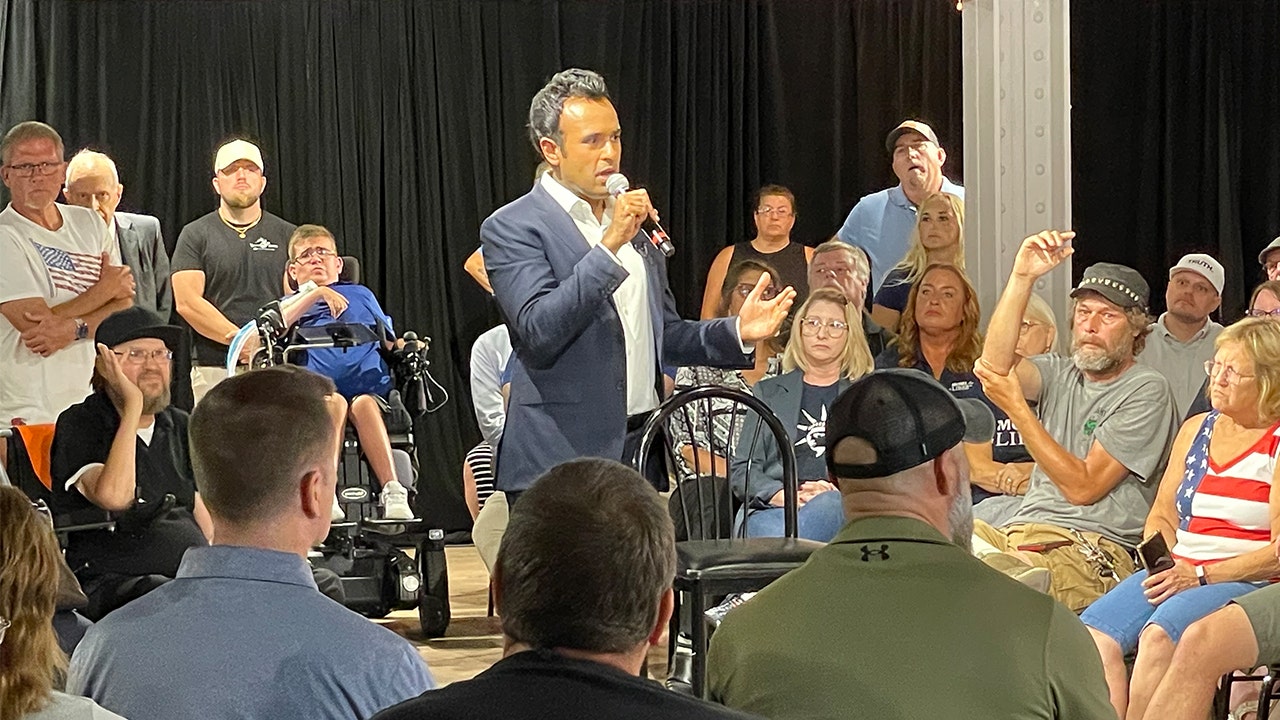The Biden administration’s plan to relocate grizzly bearpopulations to rural parts ofWashington State will have a devastating impact on agriculture and livestock in the region while posing a significant danger to local communities, a fifth generation cattle producer warned.
Residents of Washington State are doubling down on their concerns surrounding the federal government’s plan to translocate grizzly bears, an apex predator, to the federally-managed North Cascades National Park, after the National Park Service and U.S. Fish and Wildlife Service declared the strategy their preferred plan for grizzly bear management in the region.
An adult grizzly bear walks through a campground and picnic area on June 27, 2013 in Lake Louise, Alberta, Canada, within Banff National Park. (George Rose/Getty Images)
The North Cascades National Park borders rural communities in northern Washington State. If approved, the plan would not only put the livelihoods of locals at risk, but it will pose a serious danger to families who live in the area, Neil Kayser, member of the Washington Cattleman’s Association and longtime cattle producer, told Laura Ingraham on Monday.
“There’s a real danger of ourlivestock …ofthe people that are working andliving in this area that they’regoing to bring the bears into.It’s a real threat and danger toour families,” Kayser said on “The Ingraham Angle.”
Despite widespread opposition, the government’s relocation proposal was accelerated last week with the National Park Service and U.S. Fish and Wildlife Service publishing a final environmental impact statement listing the translocation of grizzly bears from other ecosystems with an “experimental population designation” as their ideal management strategy.
BIDEN ADMIN BACKS OFF PROTECTIONS FOR APEX PREDATOR, ANGERING ENVIRONMENTALISTS
“Designation of grizzly bears released into the U.S. portion of the [North Cascades Ecosystem] as a [nonessential experimental population] would provide authorized agencies with greater management flexibility should conflict situations arise,” the agencies wrote in the filing. “Any management actions would be consistent with the overall goal of establishing and conserving the NEP while promoting social tolerance and human safety.”
“The designation allows for the advancement of recovery objectives by providing an opportunity to reestablish a population within the ecosystem,” they added. “The proposed geographic extent for the grizzly bear … includes all of Washington state except an exclusion area around the Selkirk Ecosystem grizzly bear recovery where a population of bears currently exists.”
The National Park Service and U.S. Fish and Wildlife Service further wrote in their environmental impact statement that its proposal is expected to improve social tolerance of grizzly bears, and even increase public visitation and recreation in North Cascades National Park “as visitors seek to experience grizzly bears in their native habitat.”
Kayser believes the agencies are far too optimistic, telling “The Ingraham Angle” that the grizzly bear management strategy should not be dictated by “federal bureaucrats” and should have included the input of local stakeholders and organizations.
Coastal brown bear, also known as Grizzly Bear, Ursus Arcos, female and cubs. South Central Alaska. United States of America. (Education Images/Universal Images Group via Getty Images)
“I’m not awildlife biologist, but I alsobelieve that anything that getshungry is going to eat something.And if there’s no wildlife there to eat, it’s going tobe the livestock, it’s goingto be the pets, the dogs and cats,” he said. “It’s going to harass the peoplethat are hiking and walking inthis area, that vacation there.It does not need to be done by afederal bureaucrat, it needs tobe done by the Washington State [Department of] Fish and Wildlife and thelocal communities.”
“Nobodyasked to house these bears inPortland or Seattle,” Kayser added. “They’reputting them in on ourlandscape that we try to make a living on toprovide food and fiber andenergy for the Americanconsumer.”
Addressing the potential impact of the proposal on local communities, livestock and farms, the agencies wrote that they will allow people to injure or kill a grizzly bear that is threatening a person’s life or is in the act of attacking livestock, including working dogs on private land, under certain conditions.
The Biden administration first proposed the translocation plan in late September, Under the proposal, the federal government would release up to seven grizzly bears annually into the North Cascades ecosystem over the course of the next five to 10 years. The proposal was cheered by left-wing eco groups but criticized by the National Cattlemen’s Beef Association (NCBA), which represents cattle ranchers and local lawmakers, including Rep. Dan Newhouse, R-Wash.
Hiker on Sahale Arm Trail, Cascade Pass, North Cascades National Park, Washington. (Greg Vaughn /VW PICS/Universal Images Group via Getty Images)
LOCAL RESIDENTS EXPLODE AT BIDEN OFFICIALS OVER PLAN TO RELEASE GRIZZLY BEARS NEAR THEIR COMMUNITIES
At a contentious public comment session in northern Washington in November, Newhouse dismissed the plan as “dangerous” and lacking in “common sense.”
An estimated 200 residents participated in the comment session hosted by federal officials to hear feedback regarding the proposal to release grizzly bears in a nearby forest area. (Courtesy of Rep. Dan Newhouse)
Kayser said despite the “challenges” facing cattlemen today from environmental activists, he will continue to uphold his family legacy and has no plans of relocating.
“We’ve been herefor five generations.And we’ve endured a lot of things. We’re going to support our industry and our way of life,” he told Ingraham.
The federal government’s overarching goal under its plan is to establish a grizzly bear population of roughly 200 bears in the coming decades.
Fox News’ Thomas Catenacci contributed to this report.
Yael Halon is a reporter for Fox News Digital. Story tips can be sent to yael.halon@fox.com.




